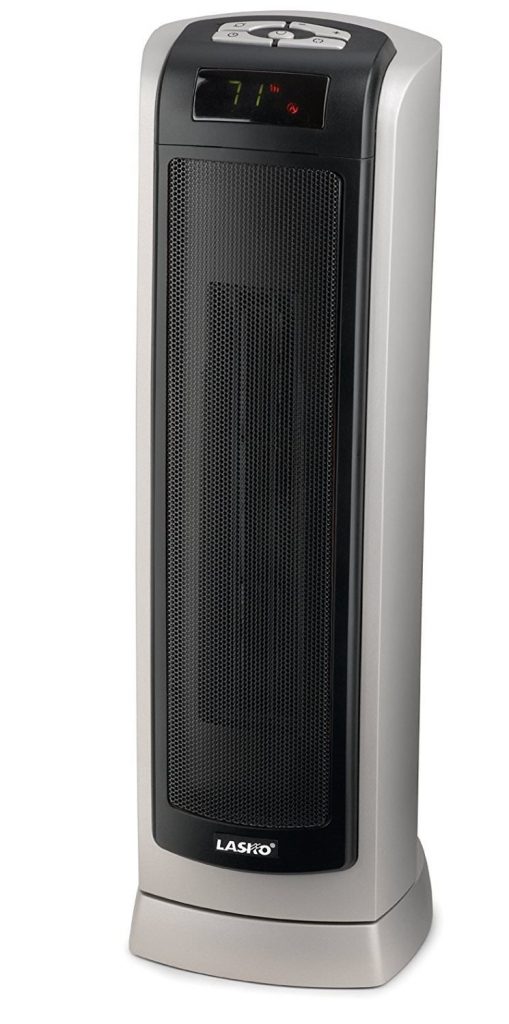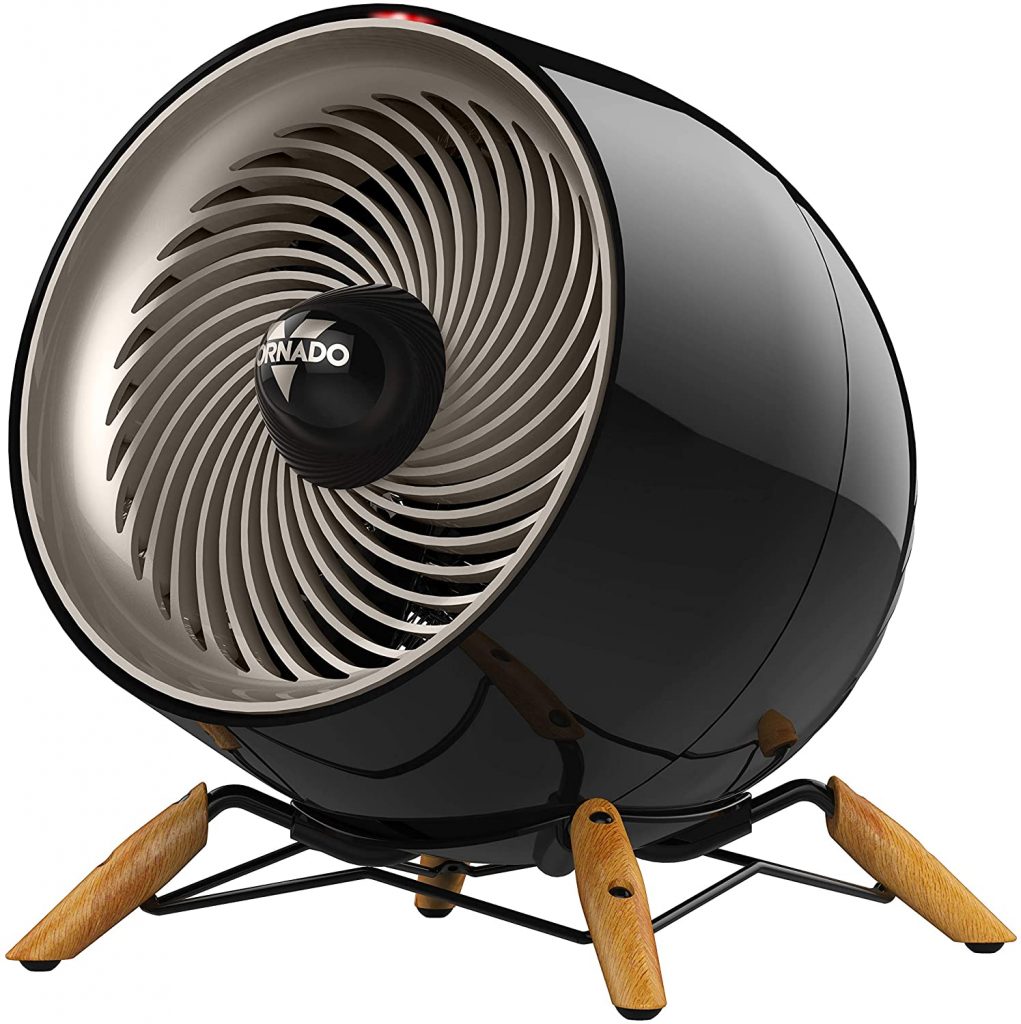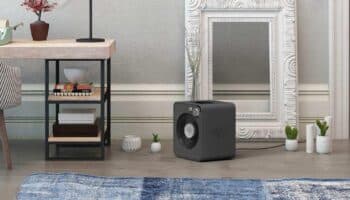We've independently reviewed this article to make sure it's as accurate as we can make it.
To find out more about our article creation and review process, check out our editorial guidelines.
Over the years I’ve owned a few electric heaters that just guzzled up electricity. They used so much I dreaded to even turn them on! So I’ve done some research on electric heaters and found some that won’t torpedo your electric bill.
Which is the Cheapest Electric Heater?
- Infrared Heaters – the lowest wattage per heat provided makes these the cheapest to run.
- Oil-Filled Heaters – their long-lasting heat makes the most out of the electricity.
- Storage Heaters – saves in running costs by using off-peak electricity tariffs.
- Ceramic Heaters – these provide good efficiency for the cheapest up-front cost.
- Convection Heaters – just like ceramic, but with less efficiency.
Below I’ve gone through all the different electric heater types with plenty of tips on how to get the most out of them.
Top Heater Recommendations for Each Type
Working with a small room? Check our guide to the most efficient small room heaters.
Wattage & Electricity Prices
Just before we dive into the heaters, I want to quickly cover wattage. Many shoppers don’t know how heaters are rated. Understanding this could save you money!
What does Wattage mean?
- Appliances are rated by Wattage. For example, ‘1500W’.
- This number is how many ‘Watts’ it uses per hour.
- We measure electricity in kilowatts per hour (1kwh = a 1000W appliance on for 1 hour)
- The amount you pay depends on your electricity tariff.
- The average for 2022 is $0.16 in the US, £0.19 in the UK, and $0.30 in Australia.
- It can also vary by time. Some plans (i.e. ‘Time of Use‘ plans) charge more during peak hours.
Which Type of Heater is Cheapest to Run?
Let’s get into the actual heaters and their types.
First up is the cheapest to run overall – infrared heaters.
Type 1: Infrared Heaters
Infrared heaters emit a constant and gentle heat that works just like the sun. What does that mean? That they heat objects, not air.
While a normal heater just heats up the air around it, an infrared heater will heat up any objects in front of it. That could be furniture, or people! Those hot objects then heat the air around them.
Here’s a quick explanation from a popular UK infrared panel manufacturer:
Not only are infrared heaters one of the cheapest to run – but it’s easy to use them efficiently, too!
Here’s some of the benefits:
- Incredible looking options: wall, panel, freestanding, ceiling heaters – even as an art piece or a mirror!
- They heat you up, not the air around you. A cold draft won’t ruin the heat.
- The warmth is 100% healthy and safe since it’s the same as the sun.
- You can feel the heat instantly, and over time the whole room gently heats up (and stays warm).
- You can control the heaters individually – no need to waste money heating unused areas.
- They’re not affected by drafts or cold air. With a normal heater, if someone opens the door and lets the hot air out, the air needs to heat back up again. Infrared isn’t affected. The objects it has heated stay warm!
AND they typically have the lowest wattages for any space heater. Because of all this, infrared heaters can save you up to 60% on your heating bills! What more can you ask for! While they may feel like a ‘new’ option to some, these heaters would hands-down be the lightest load on your electric bill. While having a ton of other great benefits.
What’s not to love? There are a few limitations:
- Infrared can have a higher up-front cost than normal heaters.
- They only heat the objects in front of them. If you’re in an office and your screen is between you and the heater – it’s your screen that will absorb the heat.
- If on the wall or ceiling, they’re typically a bit more permanent than a space heater you can roll between rooms.
- They are typically more on/off rather than with variable controls.
Infrared Space Heater Recommendation
Our top infrared space heater for years has been the infrared heaters produced by Dr Heater.
While they aren’t going to win any awards for looks or style, they are unmatched in terms of raw heating power and efficiency. They’re capable of heating up large rooms with barely on noise – silently switching on and off to maintain a warm temperature (while only using a minimal amount of electricity).
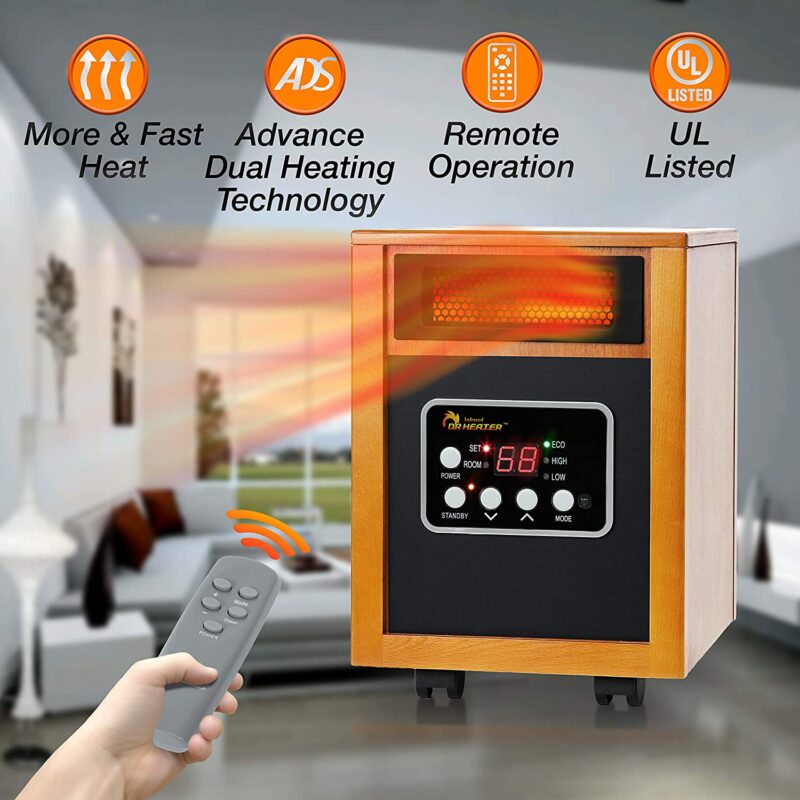
They’re not as convenient as a wall heater like the recommendation below, but if you want to guarantee reliable warmth then this Dr Heater range is hands-down our top choice.
It’s also rare we get the opportunity to recommend an appliance that’s been making customers happy for years. If you don’t take our word for it, check just how many positive reviews there are on Amazon. Writing this in late 2022, there’s almost 20,000 of them!
Wall Heater Recommendation
If you don’t have the floor space, consider opting for an infrared wall heater. These models by Heat Storm are plenty powerful enough to heat up a medium-sized room, without taking up any floor space (or producing much noise)..
This model even has attachable feet, so it can fully work as a space heater too. Great if you occasionally need heat in another area of your home or workshop.
While they work perfectly well indoors, these wall heaters are also a great option for the outdoors too. They can let everyone enjoy your patio for long after the sun goes down.
Unfortunately these wall heaters haven’t reached Australia yet! For our Australian readers, a great option is the Maxkon range of infrared wall heaters. You should see them when clicking the link from down under. They’re more standard heaters, but offer great build quality, plenty of heating power, and a range of designs.
Type 2: Ceramic Heaters
Ceramic heaters work by heating up a ceramic heating element, which then heats up the surrounding air. They may also have a fan which moves the air around.
These are standard electric heaters. They’re pretty, well, standard! The cost of running them depends entirely on their wattage and how you use them.
These are #2 because of their simplicity. They’re not the most efficient, but they’re easy to find and use. There are plenty of options so you can choose a favorite, you don’t need to worry about setting anything up, and they’re easy to move around.
Ceramic Heater Recommendation
One model I’m a fan of is this ceramic tower heater by Lasko. For a super low purchase price you’re getting a fully modern eletric heater with all the trimmings. Programmable timer and digital controls means you’re in complete control.
Type 3: Oil-Filled Heaters
While an oil-filled heater may sound pretty old-school, modern versions are super efficient. Both at heating, and keeping your energy bills down. They’re also almost completely silent!
Consider oil-filled heaters if you’re not normally in a rush. They take a while to heat up but keep their heat for a very long time. With that in mind, be sure to get one with a digital timer if you can. That means you can skip the slow wait for heat by switching it on before you even get home. You get all of the pros, and skip the main con.
Oil Heater Recommendation
For a recommendation – check out this full-sized model by Pelonis.
It’s rated at 2000W, but it also has a setting for ‘Eco-friendly’. This alternates it between the high and low settings, meaning that it’s very cheap to run (around half of the 2000W) when it’s just maintaining a warm temperature. On top of that, it’s also got full digital controls and a timer – so you can have it warmed up before you even get home!

Deciding between these heaters and infrared? I don’t blame you. To help, we’ve got a full comparison guide between oil-filled and infrared heaters. Covering all pros, cons, and recommendation tips.
Type 4: Space Heaters
We also have our standard space heaters. These are the standard models with a heating element that use fans to move hot air around the room. They’re what we know and love, but not they’re not the best in terms of cheap running costs.
They’re great if you’re looking for a fast heat, but any cold drafts or open doors can make all that heat go to waste. They’re so popular because of their cheap up-front cost, but people don’t realize the extra cost in having to run them!
That said, they can be great if you use them right. Slower heaters tend to stay on full power longer until a room is fully heated. This can add up in running costs. A space heater can take under an hour to get a room fully warm. After that, you just need to maintain with a lower power setting. If you’re looking into getting a space heater, pay extra attention to the efficiency tips at the end of the post.
Space Heater Recommendation
One model I really like is this ‘Vortex’ heater by Vornado.
Type 5: Storage Heaters
Lastly, I just want to touch on storage heaters. These are a much more expensive up-front model, but can be very cheap to run.
How these work is they ‘store’ up electricity. They’re made to go with electricity tariffs that have cheap off-peak hours. They ‘use’ the cheap electricity at night and keep it stored within thermal bricks. Then, when you need the heat during the day, they act just like a normal heater.
What does this mean in terms of running costs? That you save around 50%! Compared to using electricity in peak-hours, off-peak times can be much cheaper, offering you plenty of savings.
The trade-off is that these models are highly expensive. We’re talking over $400 – so only consider it if you’ll be investing in one to use for years.
If you want to know more, a good supplier to check out are Steffes.
How to Get The Most Out of a Space Heater
Where to Place a Space Heater
When it comes to positioning, our first concern is safety. Never place a space heater under curtains, or have anything touching the hot part of the heater. Since space heaters are for smaller rooms or areas, place it where it’ll be most useful to everyone. Try to avoid putting it near frequently opened doors, or drafty windows.
Ways to Increase Space Heater Efficiency
There’s a few tips you can follow to get the most out of your heater and save on your electric bill:
- Insulation – Make sure the area you’re heating is nice and insulated. Avoid paper-thin walls or single-pane windows.
- Check for Drafts – Next, make sure there’s no drafts that can suck out your hot air. Especially near windows and doors. (Tip: Check by placing down a candle and seeing if the flame flickers).
- Focus the Area – Have a good think about where best to place the heater. Try to not have any objects (couches or big desks) blocking you from it – especially if it’s infrared. Good tactics are to just have it close to you, or near the room door to trap in the heat.
- Heat up fast – When you use a lower heat setting, you use less electricity. Often, the most efficient way is to put the heater on full blast to heat up quickly, then maintain the temperature using a low settings.
- Use timers – Have the room warm for when you get home, or turn off the heat an hour after you’re asleep, by using digital timers. If you come home to a warm room, you may use less energy than when you’re freezing and need it to feel like a furnace!
How Long Can Space Heaters be Left On?
Modern space heaters can generally be left on without worry – even overnight. (Though you may worry about your heating bill!) Historically, many house fires have started because of people leaving clothes or curtains sitting on top of a heater. While you should never do this, modern models have heat sensors which will turn off the heater if there’s any trouble, or if it tips over.
Summary: Cheapest Electric Heaters to Run
With all of that covered, here’s our top recommendations for each heater type.
Remember – infrared heaters are almost always the cheapest to run, since they heat you and not the air. Second place goes to oil filled heaters, followed by the rest of the standard space heaters.
| Image | Cheap Running Heater | Heater Type | Link |
|---|---|---|---|
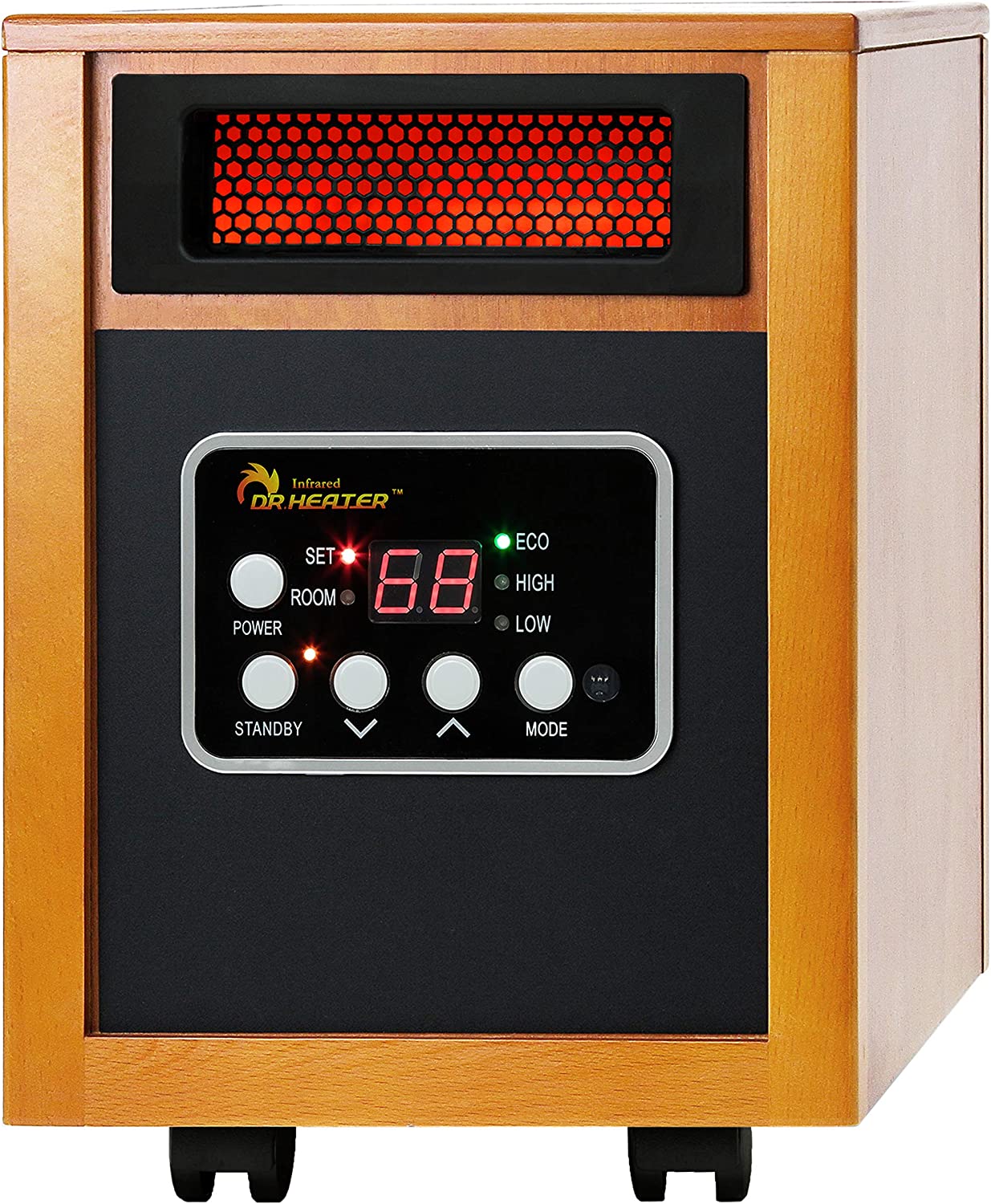 |
Dr Heater Infrared Space Heater | Infrared Space Heater | Amazon |
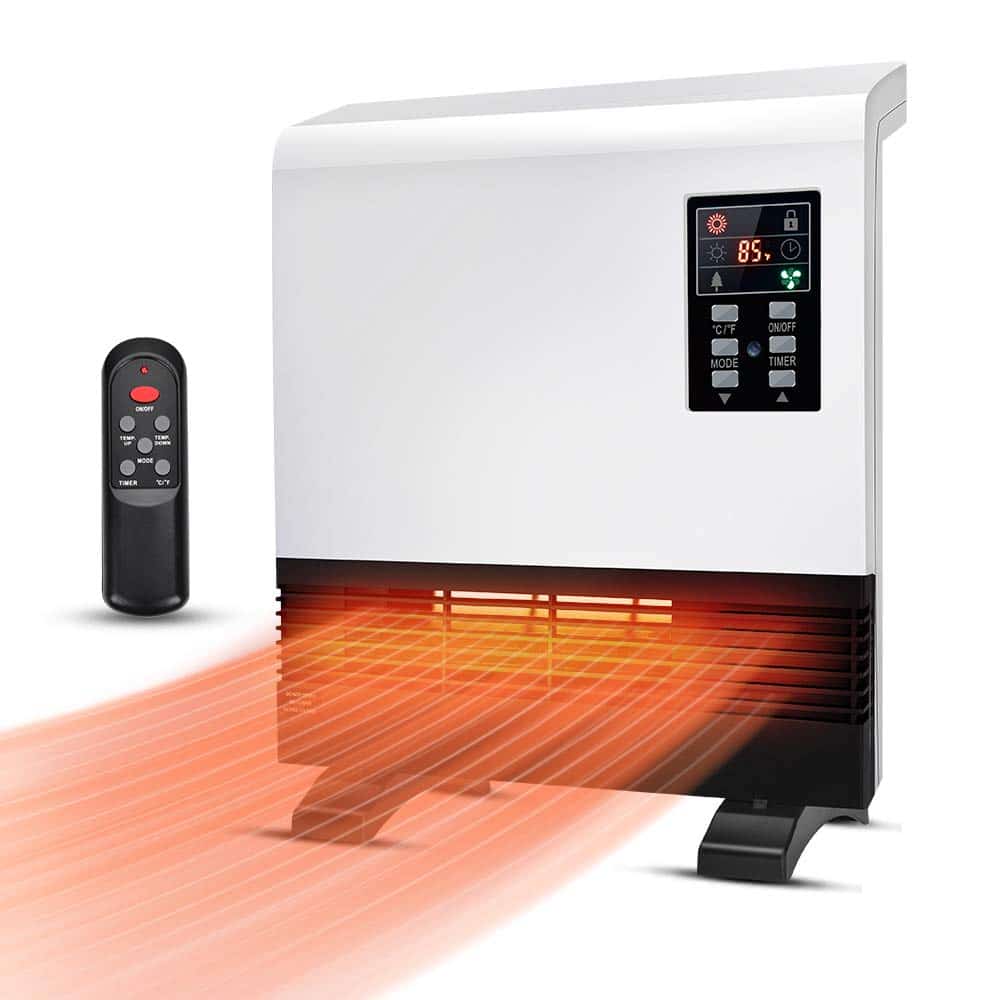 |
Heat Storm Wall Infrared Heater | Infrared Wall Heater | Amazon |
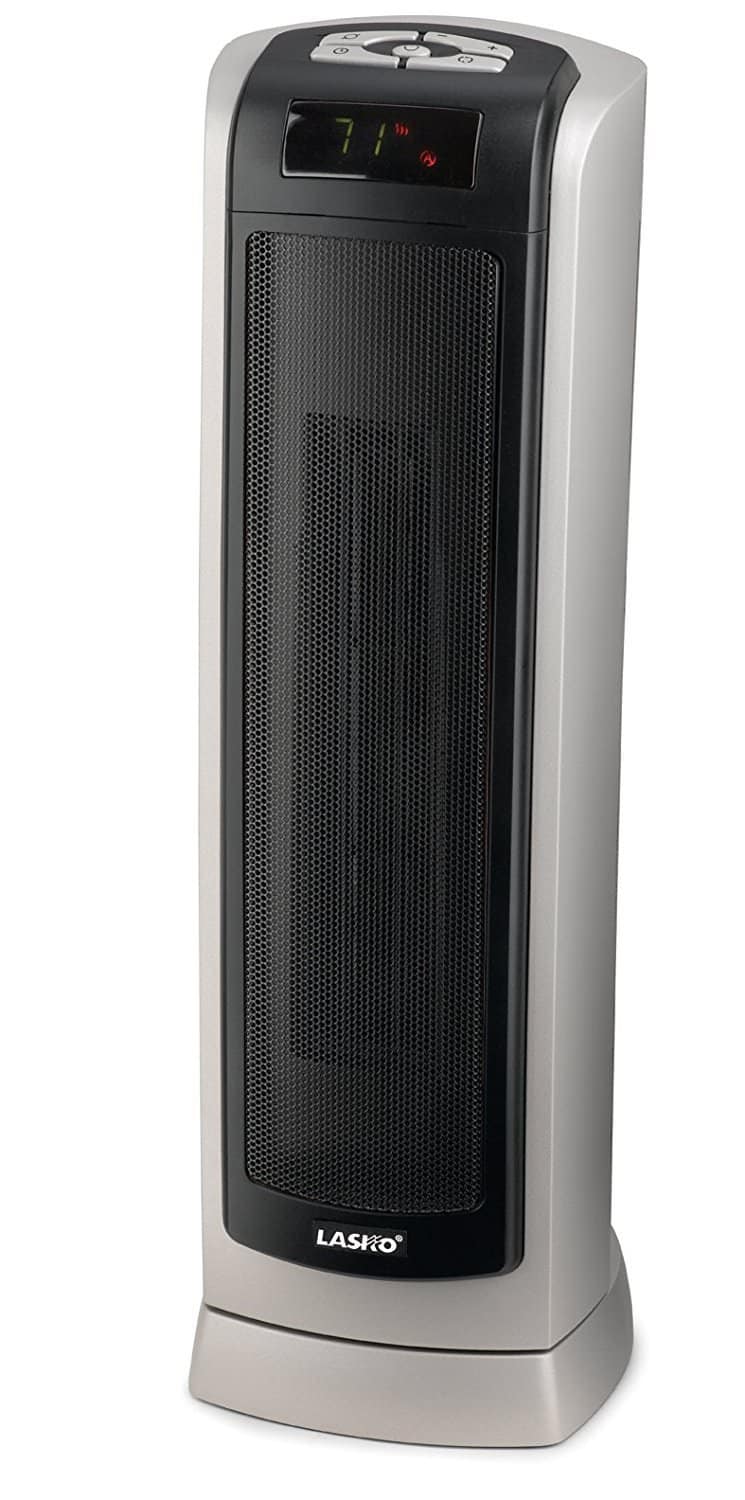 |
Pelonis Ceramic Tower Heater | Ceramic Space Heater | Amazon |
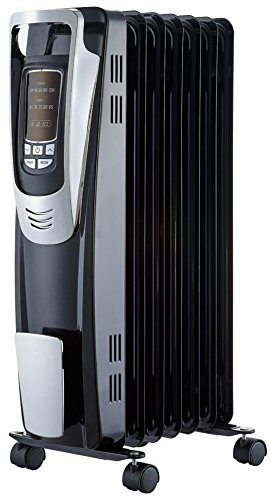 |
Pelonis Oil Filled Heater | Oil-Filled Heater | Amazon |
Conclusion
Electric space heaters can be a fantastic solution during the cold months. Unlike gas, the only ‘fuel’ they need is a plug socket, and there’s no problems with ventilation.
The huge range of models and heater types give you plenty of options – hopefully this guide has helped narrow some of those down for you.
While heating is never going to be super cheap, using a low wattage and doing so efficiently can save you hundreds of dollars a year. By adopting some smart ways to use them, and considering cheaper alternatives like infrared heating, I hope you’ll end the next year with plenty of extra money once winter is over!
-Craig
Note: I’ve only considered ‘space’ heaters in this guide. If you’re looking into full-house heating systems, try checking out the Department of Energy’s advice.


